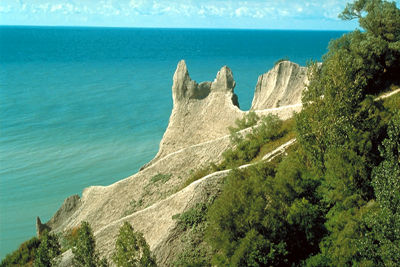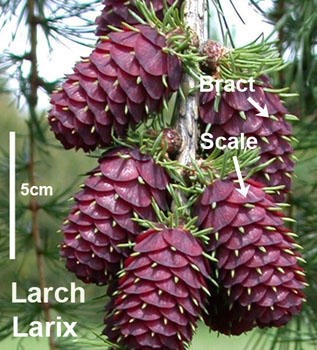Browse "Nature & Geography"
-
Article
Lamprey
Lamprey, group of primitive vertebrates which, together with hagfish and various extinct forms comprise the fish class Agnatha.
"https://d2ttikhf7xbzbs.cloudfront.net/media/media/31c5a075-649d-4cef-bc38-72753702d9cd.jpg" // resources/views/front/categories/view.blade.php
https://d2ttikhf7xbzbs.cloudfront.net/media/media/31c5a075-649d-4cef-bc38-72753702d9cd.jpg
-
Article
Land
Earth's surface experiences change driven by relief, sea level, hydroclimate and human activity. Extreme hydroclimatic events combined with human activity on steep slopes and/or adjacent to low-lying coasts generate natural hazards.
"https://d2ttikhf7xbzbs.cloudfront.net/media/media/da6ae2ec-e05e-46fd-916c-6185a6a86215.jpg" // resources/views/front/categories/view.blade.php
https://d2ttikhf7xbzbs.cloudfront.net/media/media/da6ae2ec-e05e-46fd-916c-6185a6a86215.jpg
-
Article
Land Cession
A land cession is a transfer of land from one party to another through a deed of sale or surrender. Land cessions may also be referred to as land surrenders and land purchases. In Canada and the United States, Indigenous land cessions generally took place through negotiated treaties. There are cases, however, where Indigenous peoples claim that lands were taken unjustly. The Royal Proclamation of 1763 established the protocols for land cession in both Canada and the United States.
"https://d2ttikhf7xbzbs.cloudfront.net/Indigenous treaties across Canada.jpg" // resources/views/front/categories/view.blade.php
https://d2ttikhf7xbzbs.cloudfront.net/Indigenous treaties across Canada.jpg
-
"https://development.thecanadianencyclopedia.ca/images/tce_placeholder.jpg?v=e9dca980c9bdb3aa11e832e7ea94f5d9" // resources/views/front/categories/view.blade.php
https://development.thecanadianencyclopedia.ca/images/tce_placeholder.jpg?v=e9dca980c9bdb3aa11e832e7ea94f5d9
-
Article
Landslide
A landslide is a downward and outward movement of a soil mass that formed part of a slope.
"https://d2ttikhf7xbzbs.cloudfront.net/media/media/aa619f1e-89b3-414d-9f9c-3a5c9c0b0097.jpg" // resources/views/front/categories/view.blade.php
https://d2ttikhf7xbzbs.cloudfront.net/media/media/aa619f1e-89b3-414d-9f9c-3a5c9c0b0097.jpg
-
Article
Larch
Larch is the Latin name for conifers of genus Larix of the pine family (Pinaceae). All 10-12 species of Larix grow in the Northern Hemisphere; 3 are in Canada.
"https://d2ttikhf7xbzbs.cloudfront.net/media/media/d2ffc2d7-27c2-48f4-a5c3-3adc13de3065.jpg" // resources/views/front/categories/view.blade.php
https://d2ttikhf7xbzbs.cloudfront.net/media/media/d2ffc2d7-27c2-48f4-a5c3-3adc13de3065.jpg
-
"https://development.thecanadianencyclopedia.ca/images/tce_placeholder.jpg?v=e9dca980c9bdb3aa11e832e7ea94f5d9" // resources/views/front/categories/view.blade.php
https://development.thecanadianencyclopedia.ca/images/tce_placeholder.jpg?v=e9dca980c9bdb3aa11e832e7ea94f5d9
-
Article
Leech
Leech (class Hirudinea) is a segmented annelid worm with 34 segments, many external rings and no setae (bristles).
"https://d2ttikhf7xbzbs.cloudfront.net/media/media/e1a3571d-42b5-49b0-97fb-d6e0d037c1f9.jpg" // resources/views/front/categories/view.blade.php
https://d2ttikhf7xbzbs.cloudfront.net/media/media/e1a3571d-42b5-49b0-97fb-d6e0d037c1f9.jpg
-
Article
Legume
Leguminosae, or Fabaceae, is the third-largest family of flowering plants, containing up to 650 genera and 18,000 species. Over 4,000 species are native to North America, most of which are members of the bean subfamily. They occur as scattered, secondary components of native vegetation. Over 2,000 species of milk vetch (genus Astragalus) alone occur worldwide, more than 40 in Canada. Other common native legumes are lupines (Lupinus), vetches (Vicia), locoweed (Oxytropis) and vetchling (Lathyrus). Most legumes, in association with strains of the bacterium Rhizobium,"fix" part of their nitrogen requirement and improve soils as green manure. Legumes are also a staple in the diets of both animals and humans.
"https://d2ttikhf7xbzbs.cloudfront.net/legume/alfalfa.jpg" // resources/views/front/categories/view.blade.php
https://d2ttikhf7xbzbs.cloudfront.net/legume/alfalfa.jpg
-
Article
Lentil
Lentil is a small leguminous seed belonging to the Lens culinaris species and the legume (Fabaceae) family.
"https://d2ttikhf7xbzbs.cloudfront.net/media/media/3eeb9a30-f9b1-4e9a-afc1-c608c430b9cc.jpg" // resources/views/front/categories/view.blade.php
https://d2ttikhf7xbzbs.cloudfront.net/media/media/3eeb9a30-f9b1-4e9a-afc1-c608c430b9cc.jpg
-
Article
Les Éboulements Bus Crash
Canada’s deadliest road accident to date was a single-vehicle bus crash near Saint-Joseph-de-la-Rive, in the Quebec municipality of Les Éboulements, on Thanksgiving Day, 13 October 1997.
"https://development.thecanadianencyclopedia.ca/images/tce_placeholder.jpg?v=e9dca980c9bdb3aa11e832e7ea94f5d9" // resources/views/front/categories/view.blade.php
https://development.thecanadianencyclopedia.ca/images/tce_placeholder.jpg?v=e9dca980c9bdb3aa11e832e7ea94f5d9
-
"https://d2ttikhf7xbzbs.cloudfront.net/media/media/612f2ae4-e91a-4dd8-befc-53eae2b2bee0.jpg" // resources/views/front/categories/view.blade.php
https://d2ttikhf7xbzbs.cloudfront.net/media/media/612f2ae4-e91a-4dd8-befc-53eae2b2bee0.jpg
-
Article
Lilies
Lilies (1996). The effortless shifts between the 2 settings - a Montréal prison in 1952 and a rural Québec town in 1912 - produce a magical, dreamlike atmosphere, one that inspires viewers to believe that anything can happen.
"https://development.thecanadianencyclopedia.ca/images/tce_placeholder.jpg?v=e9dca980c9bdb3aa11e832e7ea94f5d9" // resources/views/front/categories/view.blade.php
https://development.thecanadianencyclopedia.ca/images/tce_placeholder.jpg?v=e9dca980c9bdb3aa11e832e7ea94f5d9
-
"https://d2ttikhf7xbzbs.cloudfront.net/media/media/28b56454-57f9-45a1-a482-c95373db8ff7.jpg" // resources/views/front/categories/view.blade.php
https://d2ttikhf7xbzbs.cloudfront.net/media/media/28b56454-57f9-45a1-a482-c95373db8ff7.jpg
-
Article
Limestone
Slaked lime is quicklime combined with water; this hydrated lime is then sized to meet customer specifications.
"https://development.thecanadianencyclopedia.ca/images/tce_placeholder.jpg?v=e9dca980c9bdb3aa11e832e7ea94f5d9" // resources/views/front/categories/view.blade.php
https://development.thecanadianencyclopedia.ca/images/tce_placeholder.jpg?v=e9dca980c9bdb3aa11e832e7ea94f5d9
